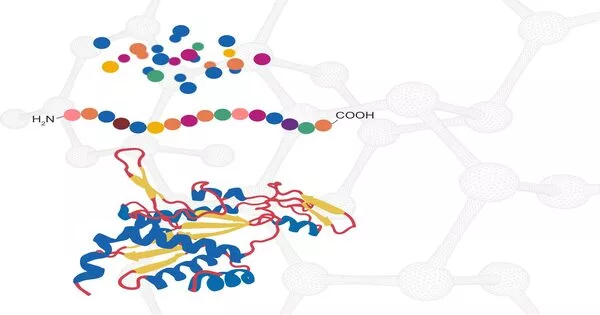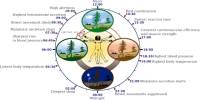The study of the entire set of proteins within a biological system, such as a cell, tissue, or organism, is known as proteomics. It is the study of proteins on a vast scale. Proteins are essential components of living organisms, performing several roles such as the production of structural fibers in muscular tissue, enzymatic digestion of food, and DNA synthesis and replication. It is a subfield of molecular biology that studies the structure, function, interactions, and regulation of proteins on a large scale.
Proteins are vital molecules in living organisms, performing a variety of functions such as enzyme catalysis, cellular structure, signaling, and gene expression regulation. Other types of proteins include antibodies, which protect an organism from infection, and hormones, which send vital messages throughout the body.
The proteome is the full set of proteins that an organism or system produces or modifies. Proteomics allows for the identification of a growing number of proteins. This fluctuates with time and the specific requirements, or stresses, that a cell or organism is subjected to.
Proteomics is an interdisciplinary field that has tremendously profited from genetic data from different genome studies, particularly the Human Genome Project. It is an important component of functional genomics since it encompasses the research of proteomes from the overall level of protein composition, structure, and activity.
Proteomics involves a variety of techniques and methodologies to analyze proteins comprehensively. Some key aspects of proteomics include:
- Protein Identification: This involves determining the identity of all the proteins present in a sample. Mass spectrometry is a commonly used technique for protein identification, often combined with liquid chromatography.
- Protein Quantification: Proteomics can be used to measure the relative or absolute quantities of proteins in different conditions. This is valuable for understanding changes in protein expression levels in response to various stimuli or disease states.
- Post-Translational Modifications (PTMs): Proteins can undergo various modifications after they are synthesized, such as phosphorylation, glycosylation, and acetylation. Proteomics can help identify and quantify these modifications, which are crucial for understanding protein function.
- Protein-Protein Interactions: Understanding biological processes requires an understanding of how proteins interact with one another. Protein-protein interactions are identified using techniques such as yeast two-hybrid experiments and co-immunoprecipitation.
- Structural Proteomics: This section is concerned with determining the three-dimensional structure of proteins. Techniques utilized in structural proteomics include X-ray crystallography, NMR spectroscopy, and cryo-electron microscopy.
Proteomics data is complex and requires bioinformatics tools and data analysis to extract meaningful information. It plays a crucial role in advancing our understanding of various biological processes, diseases, and drug development. It is often used in conjunction with genomics, which focuses on the study of an organism’s entire genome, to gain a more comprehensive understanding of biology.
















